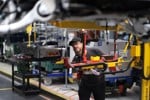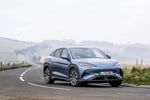Fleet decision-makers and suppliers were asked the question: what challenges are you having to overcome to decarbonise your van fleets?
Here is a selection of their answers at the Fleet200 Strategy Network meeting in February, summarised:
See below for information on the Fleet200 Strategy Network, and apply to join.
Fleet decision-makers and suppliers were asked the question: what challenges are you having to overcome to decarbonise your van fleets?
Here is a selection of their answers at the Fleet200 Strategy Network meeting in February, summarised:
- No payload, lack of range, poor towing capability, unpredictable apps, limited ancillary equipment capability - and tyres are more expensive.
- The difference in tyre wear between EVs and ICE vehicles is a myth. It comes entirely down to the person behind the wheel.
- In the initial period of use tyre wear did increase. But I put it down to drivers being excited by the additional torque available in an electric van. But now, we’re not seeing much difference. Maybe EV tyre wear is slightly higher.
- Our business has felt an impact on productivity as I can’t mandate when drivers need to charge vehicles ie during breaks; they do it when they need to and that can mean downtime when it’s least appropriate operationally.
- The biggest challenge is around home charging. I don’t believe I can have more than 25 – 30% of our van fleet charging at drivers’ homes. This could be down to planning issues, particularly with new housing, and in some cases you’re not allowed to have commercial vehicles parked outside.
- Our biggest customer won’t let us put in charging infrastructure at our depots even though the contract says a certain percentage of the fleet must be EV for a whole host of reasons.
- There’s an odd perception that public charge points are only for cars. Commercial vehicles belong to a company; therefore they should be charged at depots.
- My business operates in remote areas, MoD sites and airport terminals – where am I supposed to plug in? In one location I’ve had to put in a diesel van because there’s nowhere to charge an EV.
- Finding land on which to put charges is one of the main challenges. Plus, once you have that, getting board approval to capitalise on your new asset, invest in it. One of the challenges is when you have so many parts of our business around the table - finance, operations, commercial, HR, etc – they all come at it from different angles.
- But the general view is that putting chargers into sites would be too difficult, or costly. People need to witness what’s happening in the real world because this can work. There’s a generational angle – the younger generation is more willing to accept the change.
- You don’t want the public coming on to your sites, but there are commercial opportunities to open up your depot or site charging infrastructure to other businesses. If your vehicles are operating during the day, make the charging points available to a business whose vehicles aren’t.
- Target certain areas of the business where EV transition will work more easily than other, identify those drivers willing to be amongst the first, not those that will criticise it on chatboards, then win over the hearts and minds of others gradually.
- The only time I run out of charge is when my 12v battery lets me down powering the ancillaries on my vehicle.
- Education is so important on this issue, and yet is a challenge. If we’d have have had this conversation three to five years ago, we’d still be making the same essential points now, even though technology has moved on at a good pace.
See below for information on the Fleet200 Strategy Network, and apply to join.
Login to continue reading.
This article is premium content. To view, please register for free or sign in to read it.



















Login to comment
Comments
No comments have been made yet.